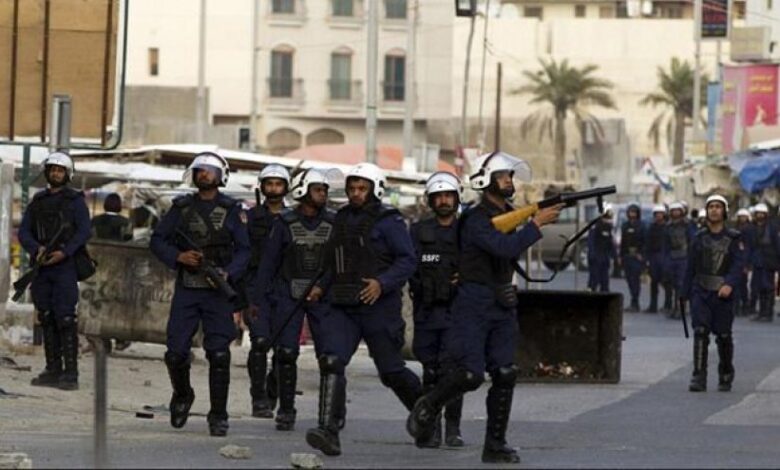The Associated Press has said that the suppression of the popular revolution in Bahrain ten years ago marked the start of the country’s dark era.
A decade has passed since Bahraini protesters gathered in the capital of Bahrain to demand the overthrow of their country’s government in 2011. Since then, Bahraini authorities have been keen to suppress all forms of dissent.
Although many of those activists and protesters find memories of the protests that threatened the Sunni monarchy’s grip on power to have been extinguished, many still suffer the implications.
Jawad Fayrouz, a prominent figure in the now-banned Al-Wefaq Shiite Society, whose citizenship was revoked due to his political activity in 2012, said: “It was the beginning of a dark era.”
Despite the fact that several activists and protesters have been either exiled or imprisoned, the risk of social and political split has become very likely. Unlike neighboring Gulf states, minor unrest has rocked Bahrain in recent years.
In the past week, residents confirmed that police have deployed massively in the city’s streets to suppress any attempt of protests. As a result, residents feared the consequences and did not risk renewing demonstrations.
An independent report on the 2011 protests and government abuse was recently released by the Bahrain Independent Commission of Inquiry. However, their website was mysteriously shut down after the release of the report; it was restored later. The Bahrain government described what happened as a “technical defect,” without further details.
Encouraged by the pro-democracy calls sweeping the Middle East, thousands of Bahraini protesters gathered to demand political reform in 2011.
Mainly organized by the country’s Shiites, the protests took place on February 14th of 2011, calling for more political rights.
Naziha Saeed, a correspondent for a French TV station at the time, described the protests by saying, “It was overwhelming.”
“I’ve never seen anything like this before. People forgot that we are a Gulf kingdom supported by strong monarchies,” she commented on the troubled days at the Pearl Roundabout, the symbolic center of the capital Manama, which was later destroyed by government bulldozers.
She further explained how the situation quickly deteriorated. The security forces tried to disperse the sit-in, and responded to the protests with torrents of tear gas and rubber bullets, and in some cases, with live bullets. Among the casualties was a young man who was shot in the head, only 20 meters away from her.
Saeed was arrested and beaten for reporting what she saw to foreign journalists. Saeed, who lives now in Berlin, was fined $2,650 in 2017 and stressed that she fears returning home.
Furthermore, the government refused to accredit Associated Press journalists, and has since imposed tight restrictions on entry visas to cover the country’s news.
As violence increased for weeks in February 2011, the demonstrations escalated into a popular movement that crossed sectarian divides. Calls for constitutional reform turned into demands to dismantle the country’s political structure.
Bahraini authorities called in a Saudi-led intervention force from neighbouring Gulf states to disperse protests.
After the crackdown, King Hamad ordered an internationally recognized commission made up of experts and scholars headed by the late law professor Sherif Bassiouni, to investigate.
The 500-page report collected testimonies, based on more than 5,100 interviews with protesters and residents that described torture in Bahraini prisons.
In addition, the report concluded that dozens of arbitrary arrests took place and many protesters were forced to confess against those who were arrested during the authorities’ raids.
As a way to humiliate them, detainees were beaten and forced to kiss pictures of the king and the prime minister, said Saeed.
A decade later, activists in Bahrain and in exile confirm there is much less freedom in their country than it was in 2011.
The government claimed that the mass protests were an Iranian plot to undermine the country’s security. Bahrain further blamed Iran for sparking the 2011 protests, although Bassiouni’s report and other experts have rejected this claim.
Since 2011, Bahraini authorities have targeted Shia political groups, religious leaders, human rights activists, journalists, and online dissidents.
Political parties were dissolved, independent news gathering became a near-impossible task and mass trials have become a common practice by the government.
Meanwhile, there have been a few low-level attacks on police and other government facilities by Shiite extreme groups.
A tweet can put one in jail despite constitutional right of freedom of expression.
Nabeel Rajab is among the prominent leaders of the 2011 protests; he was released last year after several years of imprisonment, and is now subject to home imprisonment due to the Coronavirus pandemic.
Last March, the government announced that it had arrested more than 40 people for spreading rumors about COVID-19 that “disturb public security.”
Last fall, activists say Bahraini authorities scoured the internet for dissent following the death of the long-serving Prime Minister, Prince Khalifa bin Salman Al Khalifa. One of protesters’ key demands in 2011 was he resign and be tried for corruption and human rights abuses.
One Bahraini citizen, a former journalist who declined to be identified for fear of reprisals, said he was thrown into prison for two weeks after posting a Quranic verse on social media that security forces said suggested he was gloating over the prime minister”s death. A detainee in the same cell had posted some politically charged poetry, while another had simply tweeted “good morning,” he claimed.
“Since 2011 we have only moved backward,” the 47-year-old said. “Now, the only meaning of opposition in Bahrain is to try to document your friends’ arrests,” he added.
